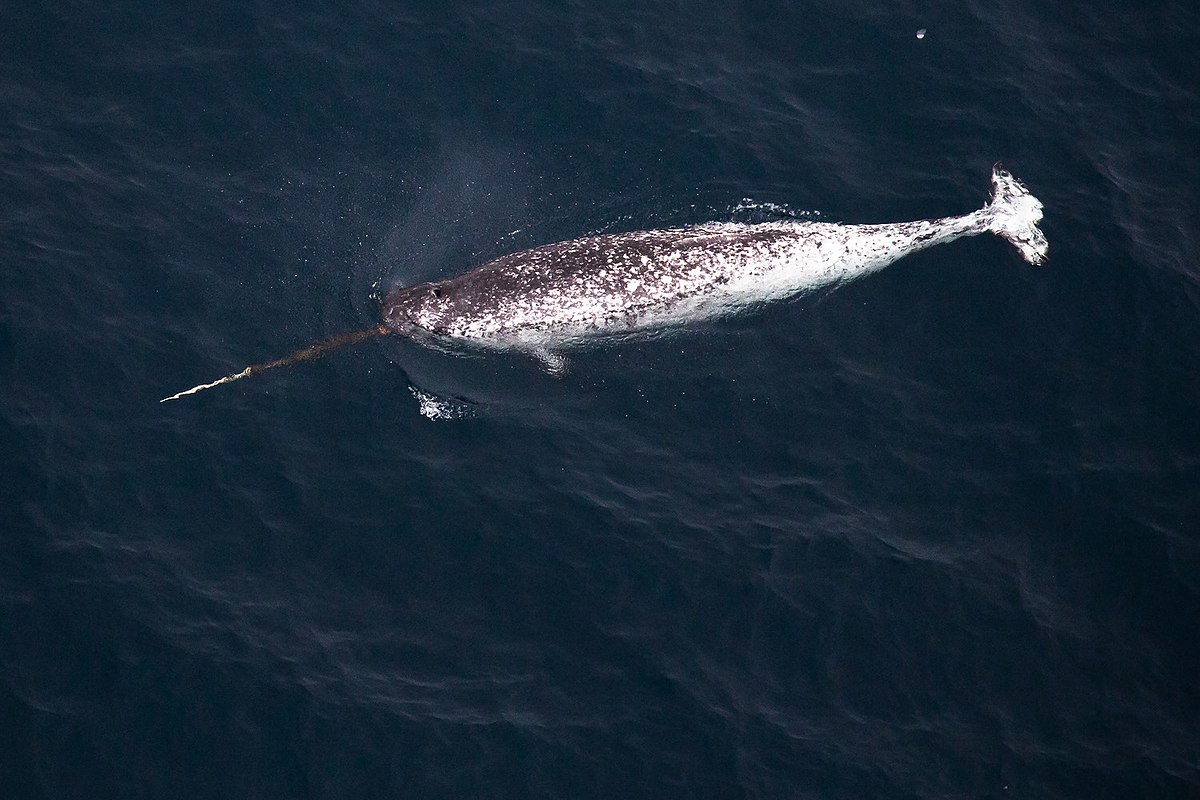https://en.wikipedia.org/wiki/Narwhal#Tusk
The most conspicuous characteristic of the male narwhal is a single long tusk, which is in fact a canine tooth that projects from the left side of the upper jaw, through the lip and forms a left-handed helical spiral. The tusk grows throughout life, reaching a length of about 1.5 to 3.1 m (4.9 to 10.2 ft). It is hollow and weighs around 10 kg (22 lb). About one in 500 males has two tusks, occurring when the right canine also grows out through the lip. Only about 15 per cent of females grow a tusk, which typically is smaller than a male tusk, with a less noticeable spiral. Collected in 1684, there is only one known case of a female growing a second tusk.
Scientists have long speculated on the biological function of the tusk. Proposed functions include use of the tusk as a weapon, for opening breathing holes in sea ice, in feeding, as an acoustic organ and as a secondary sex character. The leading theory has long been that the narwhal tusk serves as a secondary sex character of males, for nonviolent assessment of hierarchical status on the basis of relative tusk size. However, detailed analysis reveals that the tusk is a highly innervated sensory organ with millions of nerve endings connecting seawater stimuli in the external ocean environment with the brain. The rubbing of tusks together by male narwhals is thought to be a method of communicating information about characteristics of the water each has travelled through, rather than the previously assumed posturing display of aggressive male-to-male rivalry. In August 2016, drone videos of narwhals surface-feeding in Tremblay Sound, Nunavut showed that the tusk was used to tap and stun small Arctic cod, making them easier to catch for feeding. The tusk cannot serve a critical function for the animal’s survival, as females — which generally do not have tusks — typically live longer than males. Therefore, the general scientific consensus is that the narwhal tusk is a sexual trait, much like the antlers of a stag, the mane of a lion, or the feathers of a peacock.


